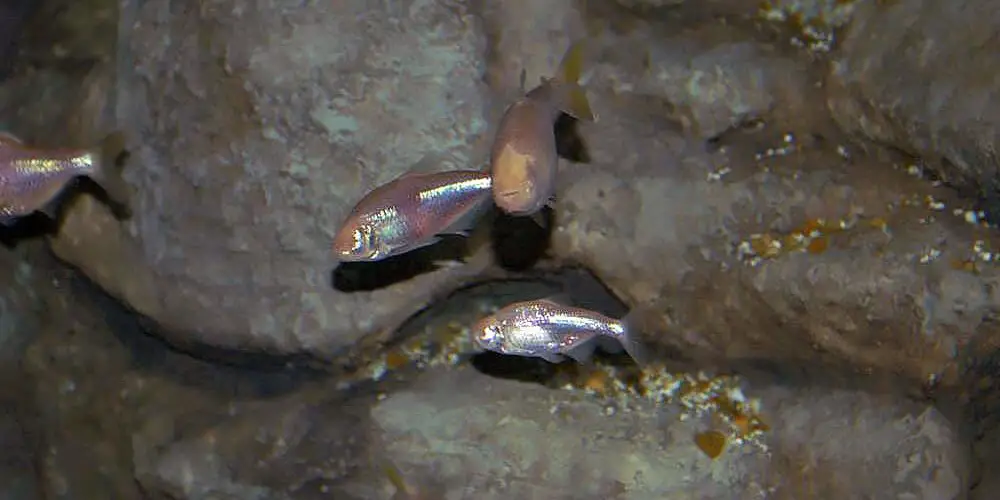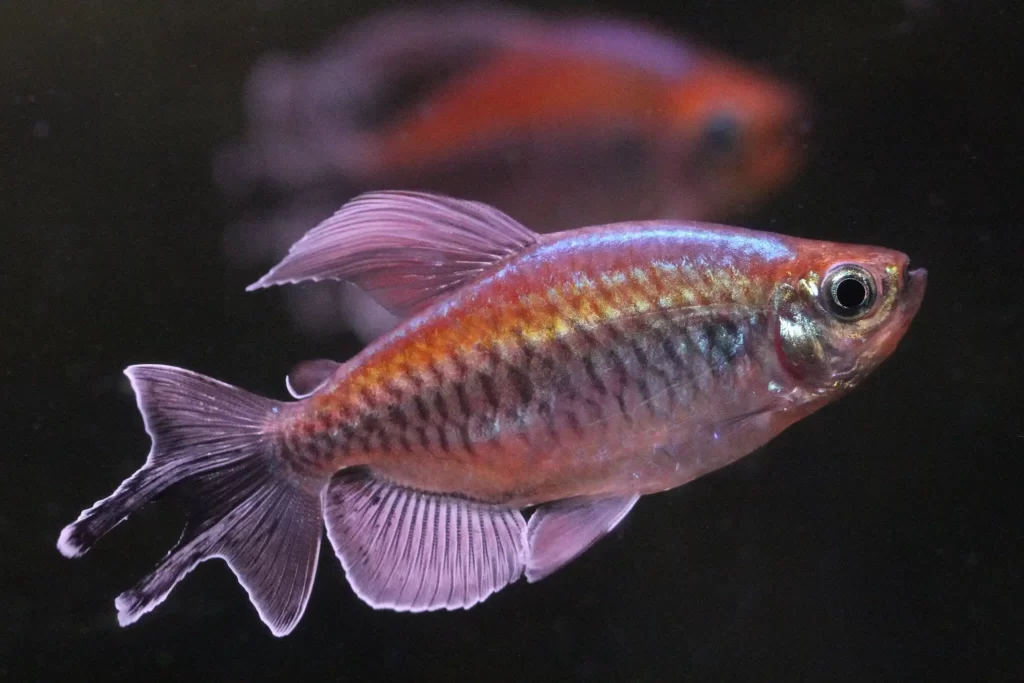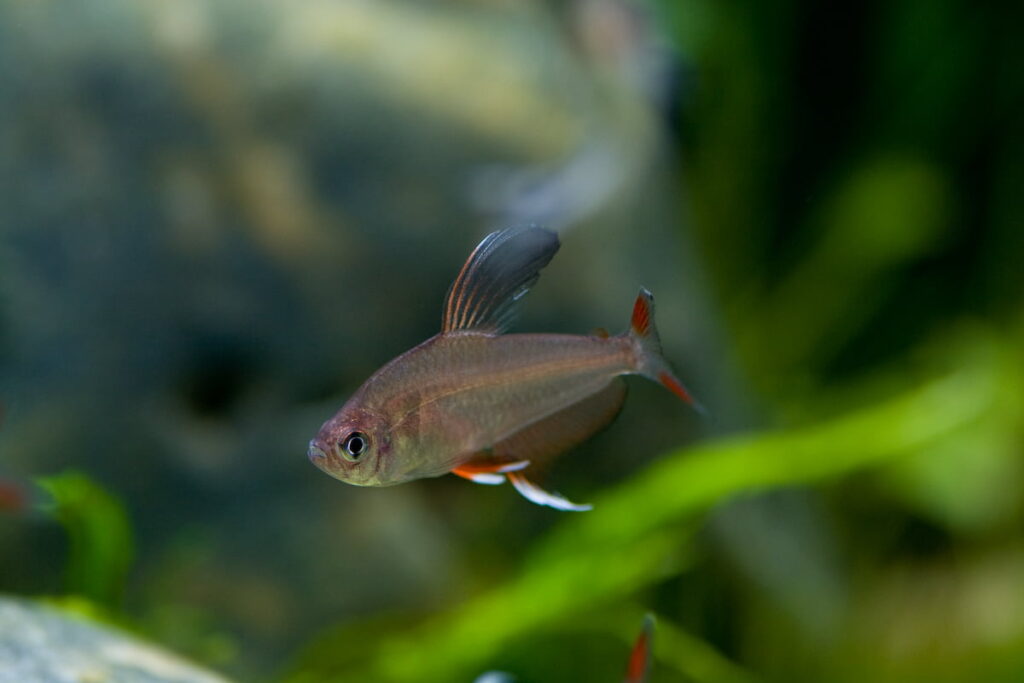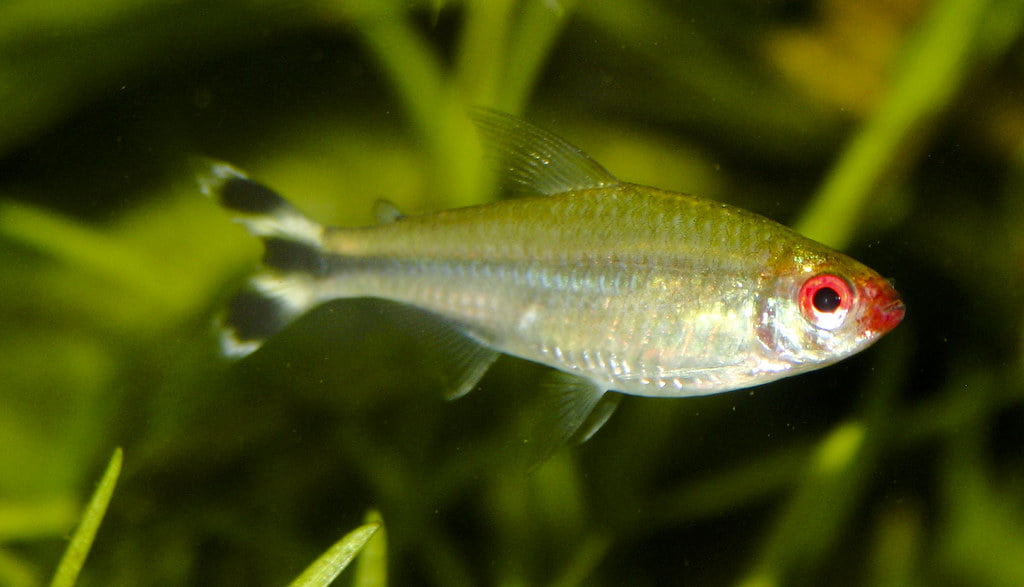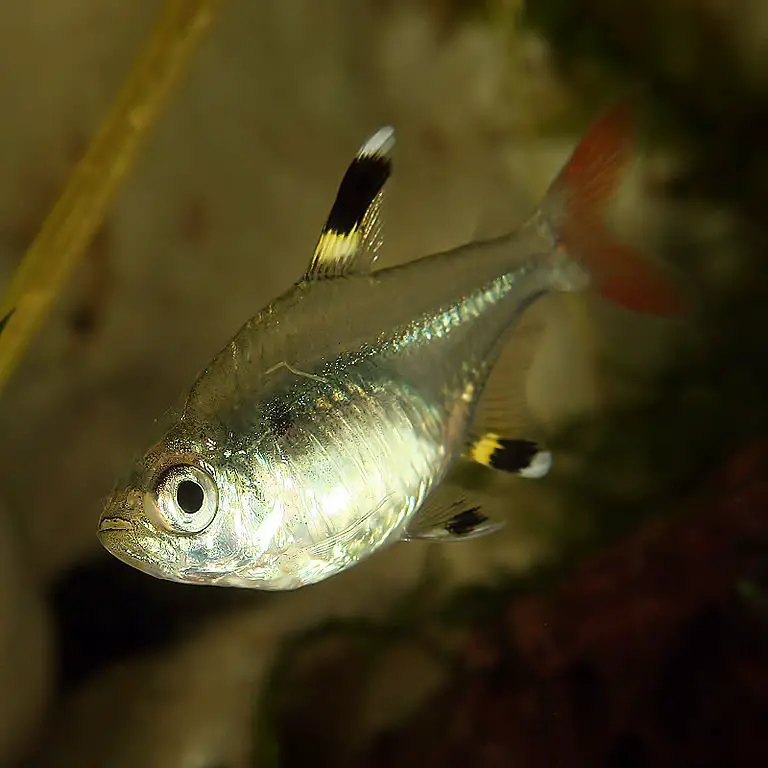Ola amigos, my name is Alberto. I am on my way to Mexico to spend a vacation with my grandma. On the way, I stopped by a shop to buy some snacks. Inside the shop, there was an aquarium full of unique fish. Si senor, the fish is none other than Mexican tetra fish. The trip’s getting bored, so I am going to tell you all I know about the Mexican tetra fish.
“This article is about the Mexican tetra fish. And I will try my best to explain all I know about the Mexican tetra fish. At the end of this article, you will get familiar with Mexican tetra fish, how to take care of the fish, tank requirements, tank mates, food/diet, and stuff like that. ”
The fish is famous for its blindness, or let’s say lack of eyes. Hence, the fish is commonly known as Blind cavefish or Blind ave / Blind Cave tetra. And scientifically, the fish is named as “Astyanax fasciatus mexicanus.” The most unusual thing about this fish is that the fry is born with fully developed eyes. After a few weeks, the eyes start disappearing gradually. In contrast to mammals, babies are born with their eyes closed for a few weeks.
Place of Origination
You can find this tetra in the USA, Mexico, southern Nevada, southern California, and Texas. The discovery of this fish was around in the 1930s. There are two distinct species of Mexican tetra fish. One species has eyes, whereas the others don’t. But different populations of this fish ranges from fish having fully developed eyes to fish having a degree of blindness depending upon their habitat adaptation.
Fish Appearance
The body length of this fish grows maximum up to 4.6 inches and lives up to 3 to 5 years. These fish have pinkish pigmentation with silver linings on their body.
Both the male and female blind cavefish have the same physical appearances. Si senor, you cannot tell which one is male and which one is female. Amazing right? There is no distinctive physical feature to identify male fish from female fish or the other way around. But there is one way. Before spawning, the female fish are slightly larger than the male ones.
Tank Requirements
There are certain things that you should be ready when you set up the tank for your tetras. Read the following to learn more.
Clean water and proper filtering devices
It is an essential requirement for every fish. Cleaning the tank and changing the water frequently can help reduce the infection via different pathogens to some extent. But there are some other factors also that introduce the disease to the fish. And I will tell you about the other elements of illness later on.
Maintain the water temperature between the 16 to 22 degrees Celsius
The water found in the natural habitat of this fish is around 16°C to 22°C. So, we need to maintain the tank water temperature accordingly to make them comfortable in an aquarium environment.
Furthermore, warmer water disrupts the pathogen life cycle. And it is a positive thing for the excellent health of the fish.
Maintain Hard Water and pH Value from 6.8 to 8.
You will need Hard water that is up to 30dGH as per their natural environment.
Maintaining the pH value of tank water is very important to keep the fish healthy. It may sound something deep scientific stuff, but it is what it is. Decaying organic material lowers the pH level of the water. So to maintain a proper pH level, frequent change in water is a must.
Nitrogen Cycle
Waste products are generated as a result of decaying organic waste, uneaten, fish poops, and so on. Nitrogen Cycle helps to minimize the toxins by converting harmful toxins to lesser damaging, which you will need to remove manually. Hence a frequent change of tank water is required.
If the fish start appearing on the top of the water, then we must be sure that the fish doesn’t like the water condition.
Lightings
Dim lighting condition and put some caves to reflect their natural environment.
Evolution
I have said earlier that there are two distinct species of Mexican tetra fish based on their habitat adaptation. Now, let me explain it.
The Mexican tetra fish with eyes occurs on the surface of water bodies like lakes, ponds, and rivers. These fish get the required amount of sunlight, so they have fully functioning eyes. And about the Mexican tetra fish with no eyes, they are found in deep cave water bodies where there lacks sunlight. Even if they had the eye, it would be of no use. Therefore, after the evolution of generation and generation, these variants of fish evolved with no eyes.
Now, you guys might think that it would be hard for these species to live. But, the answer is “NO.” Blind tetra fish might lack fully developed eyes, but they have a powerful sensing organ. These organs act as an eye to these species and help them in their locomotion. Furthermore, such organs are susceptible to any vibrations, which allows them to detect any obstacles. About the sensing organ in these species with fully developed eyes, it is not as developed as it is in blind tetra fish.
Behavior
Blind tetra fish are aggressive. According to some observations and researches, the aggressiveness of Blind tetra fish increases along with their aging. They tend to nip the fins or tails of other fish. The fish show this behavior only when some species are new in their environment. Thus, mistaking their fins and tails with food. Once the fish realize, such things are not the food; then the fish barely repeats the same mistake. Still, nobody recommends keeping any fish with long tails and fins around Blind tetra fish because of their nipping habit. The fish can get adjusted with a wide variety of fish of other species.
Diseases
Blind tetra fish are vulnerable to any infections that are common in freshwater fishes. Hence, maintaining clean water in the tank is a must. However, the transmission of pathogens may occur via:
- Addition of objects/ decorating material in the tank without sterilizing.
- Transmission of infection through infected fish
- Add new fish to the tank without quarantining to diagnose any ailments.
- Maintain coldwater conditions where the pathogens can get widespread quickly. I.e., Water temperature less than 16°C to 22°C is a desirable condition for the complete life cycle of pathogens rather than the fish.
Some common diseases include Ich or White spot disease, Velvet, Fisheye pop, Fungus, Swim bladder disorder, etc. These diseases damage internal organs as well as external parts of the fish. We must provide treatment to the infected fish as soon as symptoms of any disease start appearing on the fish. Always focus on preventing the fish from any disease rather than providing treatment after the infection. You can offer the treatment to the infected fish by yourself, but make sure that you are familiar with the treatment process and the required drugs; otherwise, consulting the veterinarian is always the best choice.
Breeding
About the breeding behavior of Blind tetra fish, they are egg layers. And as I said earlier, reproduction is the only factor to distinguish male and female Blind tetra fish.
For the process of breeding, you must separate the school of 3 to 7 adult male and female Blind tetra fish and keep them in a new tank/ breeding tank. They will find their mating partner themselves. During this period, female Blind tetra fish are slightly larger than male Blind tetra fish. A slight drop in temperature and proper nutrition is desirable during the breeding period. Providing nutritious food helps in quicker and better spawning. The fish feeds on the worm, insects, live species, and processed foods for aquarium fishes. Since they depend upon their sensing organ for locomotion and for finding food, the fish are relatively slower in finding food than other fish species
When the female lay the eggs, you must separate the parent fish from the eggs; otherwise, the fish can mistake the eggs with food. The fish can lay 1000 eggs at a time. Furthermore, the eggs start hatching shortly after 24 hours. Short hatching period, isn’t it?
Learn about tetra fry care.
Caring
Tank
We can school up to 3 to 7 fishes in the tank (same species or different species or both). The tank size must be large enough that it can hold up to 20 to 29 gallons of water. Because of the blindness, the fish may have some difficulties in moving around the tank. Like bumping against the tank wall or any other objects. Still, the fish gets accustomed to the tank set up after some time. It is because the fish starts roaming around the tub, and once it has a clear picture of the tank setup, then it will have no problem in moving around.
Tank Mates
Even though their aggressiveness and nipping habit, they can live in harmony with many other species of fish like Large Tetras, Swordtails, Plecostomus, Corydoras catfish, Silver Dollar, etc. It is not simple as well as not too hard to take care of this fish. Try finding, slightly smaller, or somewhat larger fish species or some fish species of its size as their tank mates. The fish may mistake tiny fishes with food, whereas larger fish may threaten or bully them into creating a stressful environment. Consider these facts to create a peaceful environment for the fish.
Water Condition
Blind tetra fish prefer warm water, so you need to maintain the tank water temperature between 16°C to 22°C. Since the fish is native to the USA, Mexico, southern Nevada, southern California, and Texas, where the nature of water is hard, the fish prefers hard water to live. So always remember to maintain the hardness of water up to 30dGH and pH between 6.5 to 7.5.
Food
The fish prefer a wide variety of eating like a worm, insects, live food, and processed foods for aquarium fishes. It is not quite challenging to feed this fish species. In the wilderness, they feed on worms, insects, and live foods. But here we are more interested in feeding the fish in aquariums.
And in aquariums, Blind tetra fish tend to swim at the bottom of the tank for finding food. So put some processed fish food at the bottom. Generally, if the fish does not show any signs of appetite, then it indicates that they are ill, and hence treatment is required.
The fish depends on their sensing organ to find the food. Hence, they may be a little bit slower in finding food in comparison to other fish species, so consider feeding it properly. Do not overfeed the fish, and else the fish may get constipation, swollen belly, and some other related disease. Instead, feed them frequently in a fixed interval of time.
Lighting and Decoration
You can find the fish in cave water where there lacks sunlight. Due to the lack of the sun, there are fewer plants inside the cave water environment. So my amigos, to maintain their natural habitat inside the aquarium, dim the light of the aquarium to make the fish comfortable inside the tank and introduce less number of plants only to maintain oxygen level in the water.
You should not waste your time decorating the tank to make it look good because it makes no sense. Just add a few numbers of caves, or let’s say hiding places in the tank like in their natural environment. Also, add some dark gravels or small stones. It will help to make the aquarium look darker.
Summary
| Scientific name | Astyanax fasciatus mexicanus |
| Common name | Blind cavefish or blind cave tetra fish |
| Date of discovery | Around the 1930s |
| Place of origin | USA, Mexico, southern Nevada, southern California, and Texas |
| Popular for | Lack of eyes |
| Taking care | Moderately hard |
| Water hardness and pH value of water | 30dGH and pH between 6.5 to 7.5 |
| Size | 4.6 inches |
| Fish diet | Wide variety of food like a worm, insects, live snacks and processed foods for aquarium fishes |
| Nature | Aggressive |
| Life span | 3 to 5 years |
| Tank size | 20 to 29 gallons |
| Tankmates | Large Tetras, Swordtails, Plecostomus, Silver Dollar, Corydoras catfish, etc. |
| Water temperature | 16°C to 22°C (Warm) |
Conclusion
So, gracias amigos for listening to my advice. I hope this article will help you guys to keep your Mexican tetra fish, aka blind tetra fish far from any diseases. You, amigos, remember to clean the tank and change tank water frequently. Also, don’t forget to maintain their natural environment in the tank.
